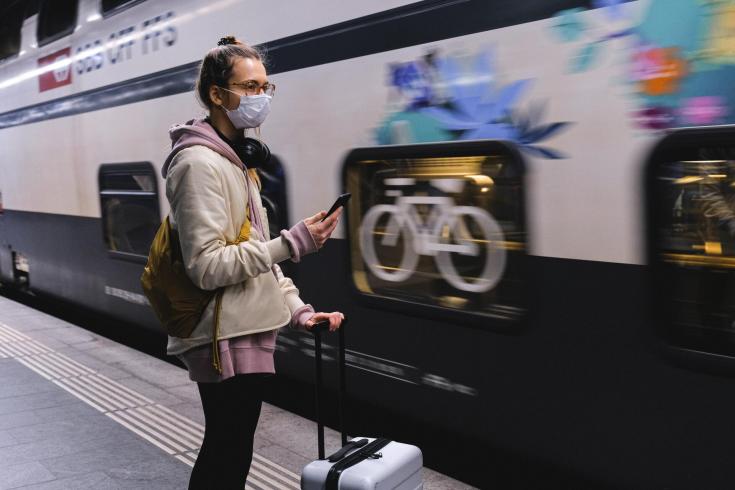Making Public Transport safe in times of COVID-19

With public authorities across the continent attempting to tackle the COVID-19 pandemic, the Interreg Europe Policy Learning Platform launched a poll within its community to determine which issues were of most concern for regional authorities. Under the Low-carbon economy theme, safety in public transport emerged as the major concern, and as such, an online discussion was held on 7 July 2020 to share and assess good practices. Find the presentation slides
The discussion started with a presentation from Ilaria Bonetti from Innovhub SSI (SmartEdge) who discussed the situation in Lombardy (Italy) with lockdown leading to a plunge in public transport use, and the region’s political response. As well as measures to improve general safety, Lombardy has embraced re-opening as an opportunity to develop low-carbon mobility, supporting cycling and walking, bike sharing, e-vehicles and optimised public transport, with plans to also make full use of the European Recovery Plan and Green Deal initiatives.
At its most basic, safety requires social distancing, frequent hand washing, and cleaning of surfaces, as COVID-19 spreads in air droplets from infected people coughing or sneezing, and the virus can survive on surfaces and pass onto people’s hands. The required social distancing, however, makes high density public transport a particularly risky environment. Working with the Interreg Europe community, the Policy Learning Platform collected together around 20 good practices related to COVID-19 and public transport, and devised a typology of measures that can be introduced:
- Increasing transport capacity by raising the number of buses and trains in circulation, as in Madrid and Dublin, so that people can travel whilst maintaining social distancing;
- Limiting ridership to certain users only, such as the dedicated buses and trams for vulnerable people, implemented in Iasi (Romania) and in Auckland, New Zealand, to provide transport services only to those who truly need it
- Shifting demand away from peak times, as has been done with businesses in France, and schools in the Netherlands, encouraging people to spread travel out, so not everyone is trying to travel at once in rush hour;
- Helping riders to make choices that alleviate crowding, by providing information on crowding. This is primarily being done through websites and apps, such as the Deutsche Bahn website, which gives information on carriage crowding when booking tickets, or the Autocorb app in Catalonia, and the upcoming London app, developed by UrbanThings, which demonstrate realtime vehicle capacity;
- Enacting safety measures such as mandatory mask wearing, frequent cleaning and on board information. This includes free mask distribution in Madrid, travel guidelines in Ireland and the UK,
- Restoring confidence through communication and public relations measures, such as the free train tickets offered in Belgium to encourage people to return to normal habits and also boos the domestic economy.
Measures were ranked and assessed by the participants in relation to their ease or implementation and overall impact, and the participants judged that increasing capacity, general safety measures and shifting transport peaks to be the most high impact interventions, though also the ones that were most difficult to implement.
In terms of increasing capacity, this was recognised as being costly, with new vehicles potentially being needed, though it also presented an opportunity to purchase new low-emissions and electric vehicles, using a mid-term challenge to meet long term goals. For shifting peaks, discussions brought up the topic of peak and off-peak prices, charging more to travel at peak time in order to try to shift behaviours. Though no COVID-specific practices were found, this is a potential avenue for future investigation. General safety measures (cleanliness, mandatory masks, etc.), were viewed as less difficult measures to implement and are already widely used.
Additionally, there was some discussion related to the challenges of rural public transport in particular, where very few good practices have been found. The challenge relates mainly to shifting people back to public transport after they have got used to using private vehicles again, as well as the costs of maintaining rural services that are little used. The Policy Learning Platform will stay on the outlook for suitable practices. Other concerns related to ventilation on public transport which can circulate the disease. Again, no practices were found, but guidelines from the European Centre for Disease Prevention and Control suggest that general safety measures are enough to reduce this risk.
Further resources
Opportunities for the low-carbon economy in the COVID-19 Recovery Plan